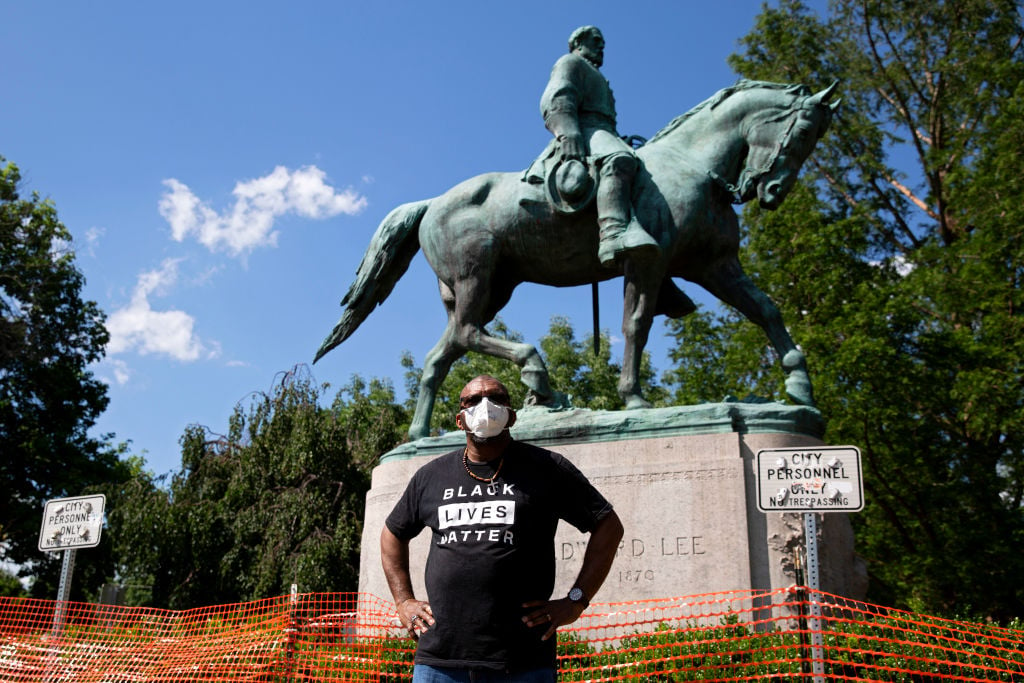
An infamous bronze monument in Richmond, Virginia memorializing Robert E. Lee, the commander of the Confederate Army in the Civil War, will be removed, the state’s governor announced today. It’s the latest in a string of controversial monuments to fall amid the protests that have erupted nationwide in the wake of the murder of George Floyd by a Minnesota police officer.
“That statue has been there for a long time,” said Virginia Governor Ralph Northam in a press conference this morning. “It was wrong then, and it’s wrong now. So we’re taking it down.”
Northam has instructed the state’s Department of General Services to remove the statue “as soon as possible.” It will be put in storage indefinitely while his administration “work[s] with the community to determine its future.”
Virginia has more Confederate monuments than any other state, with Richmond, the capital of the former Confederacy, being home to five prominent examples alone. Statues memorializing Confederate leaders such as J. E. B. Stuart, Jefferson Davis, Thomas “Stonewall” Jackson—all of which line the city’s Monument Avenue—have been targeted by those seeking social justice reform.
But the statue of Lee has long been the most recognizable—and, for many, abhorrent—of the bunch. It was the first to be erected on the avenue and the only one owned by the state. Upon its installation in 1890, state laws were put in place that prevented it from being moved.
The Lee monument came under increased scrutiny as a symbol of systemic racism and inherited trauma in 2015, as the discourse over the fate of such statues was thrust into the spotlight following the Charleston church shooting. Now, these conversations have reignited. In recent days, protesters and the local government removed sculptures marking Confederate history in Birmingham while, in Philadelphia, authorities de-installed the 10-foot sculpture of Frank Rizzo, the former police commissioner-turned-mayor who is bitterly remembered by the city’s black community for abusive and racist tactics.
“It’s time to acknowledge the reality of institutional racism, even if you can’t see it,” Northam said during the press conference. “Public policies have kept this reality in place for a long time. But symbols matter too, and Virginia has never been willing to deal with symbols—until now.”
The Lee sculpture has been vandalized numerous times, including last weekend, as crowds tried to remove it by force. Protestors also covered the statue with graffiti and projected onto it an image of Floyd with the words “NO JUSTICE NO PEACE.”
Yesterday, Richmond’s mayor Levar Stoney announced that he would introduce an ordinance to remove all four city-owned Confederate statues along Monument Avenue on July 1 as well—the same day a new state law goes into effect granting cities and counties across Virginia the power to remove their own monuments.
“Richmond is no longer the capital of the Confederacy—it is filled with diversity and love for all—and we need to demonstrate that,” Stoney said in a statement.